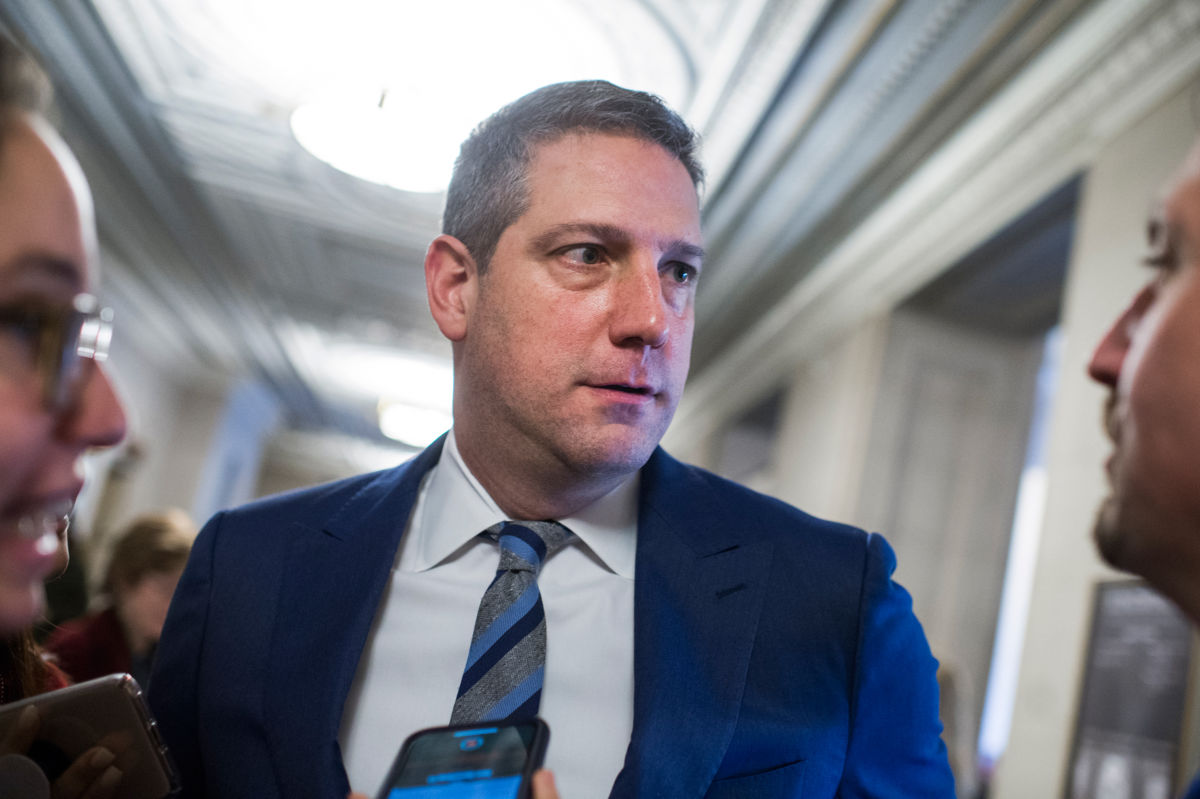With a rally looming on Saturday in Youngstown, Ohio, Rep. Tim Ryan (D-Ohio) announced he’s joining the crowded Democratic presidential field. Ryan’s campaign website and corresponding announcement video, released after his appearance on The View on Thursday, hit upon his blue-collar background representing “America’s heartland.” Long an outspoken advocate of union workers, he cited the closing of the Lordstown, Ohio GM factory as a motivating factor for joining the race.
Ryan first gained national attention for his 2016 attempt to replace Rep. Nancy Pelosi (D-Calif.) as Democratic House leader. That year Ryan challenged Pelosi for the position of House Minority Leader, a vote he lost 134 to 63. He also tried to block Pelosi from her successful return as Speaker of the House.
A Rust Belt progressive in the vein of Sen. Sherrod Brown (D-Ohio), Ryan supports programs like “Medicare for all,” yet spoke in favor of the simplifying the tax code before voting against the 2017 Republican tax cuts he deemed a “tax scam.” He has been one of the leading critics of NAFTA and other trade deals which affected his working-class Ohio district.
As he enters the presidential race, Ryan will look to tap a crucial fundraising base, one that, lacking the entrance of Brown, may pick him as their favorite — unions.
As a member of the House, organized labor has been one of Ryan’s biggest financial supporters. Labor contributed more than $1.8 million in PAC money over the course of his career, good for almost 38 percent of Ryan’s all-time PAC money.
Of his top 10 all-time donors, unions take up seven spots. The Machinists/Aerospace Workers Union($90,500) and the Sheet Metal, Air, Rail and Transportation Union ($90,000) are Ryan’s largest all-time labor contributors. His overall biggest all-time contributor is First Energy Corp, an electric utility company based in Ohio, which between its PAC and employees contributed $93,038.
While labor is a crucial base for Ryan, the largest sole industry that supports him is lawyers/law firms. These white-collar workers have contributed $555,671 to Ryan’s campaign, making them his top all-time industry. The next four industries are all various union categories.
Overall, Ryan’s fundraising lags behind some of the powerhouses already in the primary race. Since he represents a fairly safe Democratic district, Ryan’s fundraising has trailed the average House member’s totals in every election cycle back to 2002. In the 2018 cycle, the average House member pulled in around $2.2 million, while Ryan collected just under $1.6 million.
Ryan also collects little from small donors, an increasingly important Democratic fundraising metric and one that is the focus of much attention in the early months of the 2020 race. In the 2018 cycle, just 8.3 percent ($132,970) of Ryan’s funding came from contributions under $200. He relied heavily on large individual contributions and PAC money which is typical for members from safe districts.
Ryan appears to have a wide donor base already set up, something that would benefit a presidential run. A majority of the money he raised came from out-of-state in 2018. In fact, he received contributions from every state but North and South Dakota, a strong national showing for a lower-profile member.
Like many members of Congress looking to make an impact, Ryan operates a leadership PAC, Penguin PAC. Though it has been around since 2006, the 2018 cycle was by far the best for its fundraising. It raised around $260,000 and doled out $60,950 to a variety of House members and federal candidates. The PAC’s biggest recipient for a House seat was Pete D’Alessandro, a former Sanders advisor who lost his bid in Iowa, who got $5,000. Former Sen. Joe Donnelly (D-Ind.) was the only Senate member who received funds, with $6,500.
The biggest contributor to the PAC with $20,000 were affiliates of Simon Property Group, a real estate company which owns numerous shopping malls. Unions were also big donors to the leadership PAC.
While contributions were the PAC’s biggest expenditure, it also spent heavily on fundraising, strategy and research, which is typical for a candidate with plans to seek higher office.
Additionally, Ryan launched the Tim Ryan Victory Fund joint fundraising committee. In the recent midterms, its first campaign cycle, the fund raised $21,350. Joint fundraising committees (JFC) are often created to raise for more than one candidate or party committees, however Ryan’s JFC appeared to only raise money for him. Most of the committee’s funds were transferred to Ryan’s campaign committee ($13,456) and his leadership PAC ($7,000).
Our most important fundraising appeal of the year
December is the most critical time of year for Truthout, because our nonprofit news is funded almost entirely by individual donations from readers like you. So before you navigate away, we ask that you take just a second to support Truthout with a tax-deductible donation.
This year is a little different. We are up against a far-reaching, wide-scale attack on press freedom coming from the Trump administration. 2025 was a year of frightening censorship, news industry corporate consolidation, and worsening financial conditions for progressive nonprofits across the board.
We can only resist Trump’s agenda by cultivating a strong base of support. The right-wing mediasphere is funded comfortably by billionaire owners and venture capitalist philanthropists. At Truthout, we have you.
We’ve set an ambitious target for our year-end campaign — a goal of $112,000 to keep up our fight against authoritarianism in 2026. Please take a meaningful action in this fight: make a one-time or monthly donation to Truthout before December 31. If you have the means, please dig deep.
